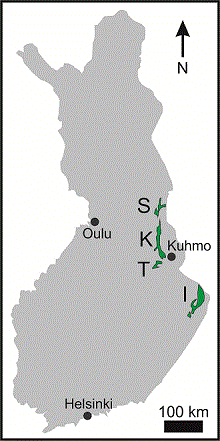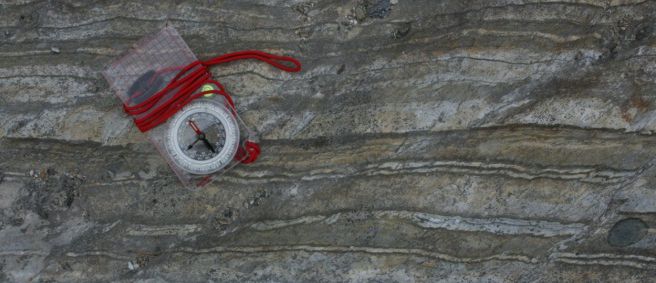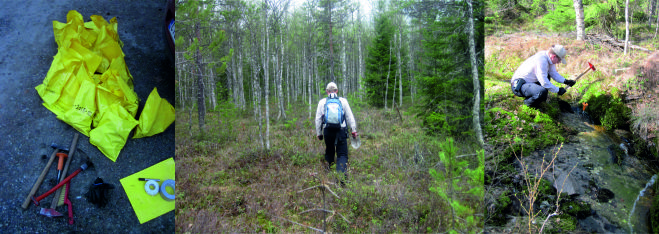The ancient volcanoes of Finland

Even though the present bedrock of Finland is stable, in the past it was full of fire and brimstone. Most of our bedrock was formed by the collision of volcanic island arcs. Ancient pillow lavas and petrified tuff layers found in our bedrock remind us about the ancient volcanoes. The oldest volcanic rocks both in Finland and on Earth are called the Archean greenstone belts. These over 2,500 million year old chains of rock formations are found on almost every continent and are an important research area in geology.
Mysteries from the Archean Eon
The oldest parts of the bedrock in eastern and northern Finland were formed in the Archean Eon approximately 3,800–2,500 million years ago. At the start of the Archean Eon, the magma ocean over the Earth had cooled down enough to form a solid crust. As time went by, continents grew, life evolved, and an oxygen-rich atmosphere was formed.
Studying the bedrock parts preserved from the Archean gives answers to how the early Earth evolved. Ancient volcanoclastic rocks and the sediment rocks related to them have preserved a record of aspects related to the formation of life and the oxygen-rich atmosphere. Ancient sedimentary rocks can be compared to the present sediments, and that information can be used to study the environments they have formed.

Research by Luomus
Elina Lehtonen is writing her doctoral thesis on the age and evolution of the oldest volcanoes of Finland at Luomus (2012–2015). She is studying the age and evolution of the Suomussalmi, Kuhmo, Tipasjärvi and Ilomantsi greenstone belts. Her research strives to answer questions about the age of the oldest volcanoclastic rocks, the age differences between the different greenstone belts and the deforming and metamorphoses of the greenstone belts in later events of the evolution of our bedrock. The research is being done in co-operation with the Geological Survey of Finland. The research is funded by the Finnish Doctoral Programme in Geology and the K. H. Renlund Foundation.
In search of the oldest volcanoes in Finland
Bedrock mapping done in the field is an important part of research. However, fieldwork can be sometimes tricky – you might have to hike through the swamps to find the right outcrop. When the outcrop is found, the coordinates and features of the rock are written down. Samples are also collected from the essential outcrops for further studies. Depending on the nature of the study, the sample size varies from smaller than your fist to samples of several kilograms.
